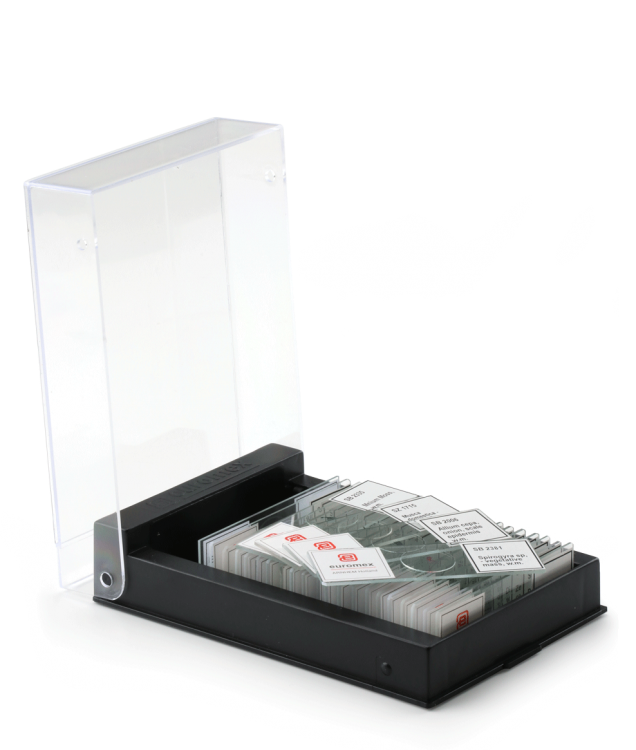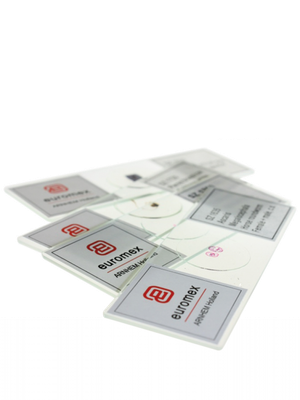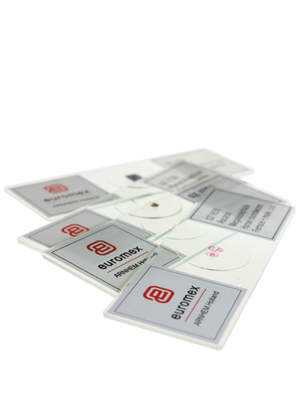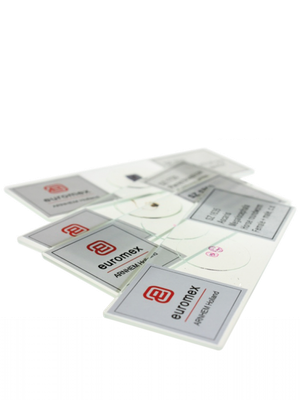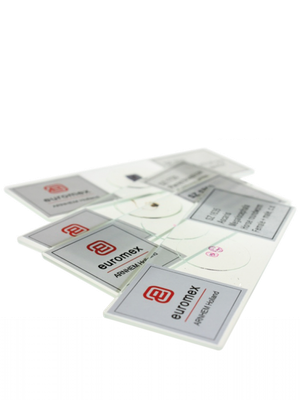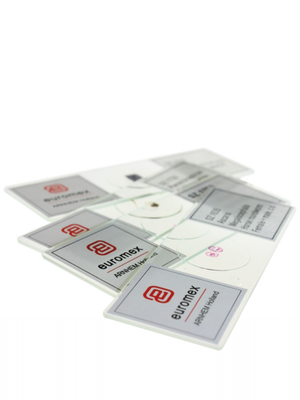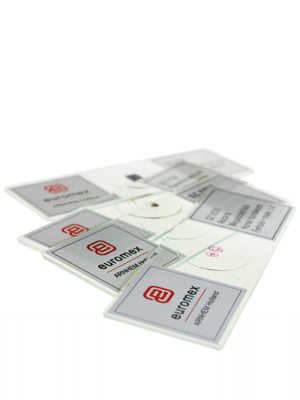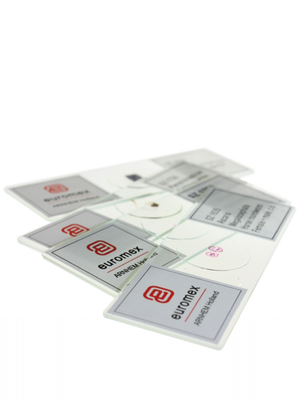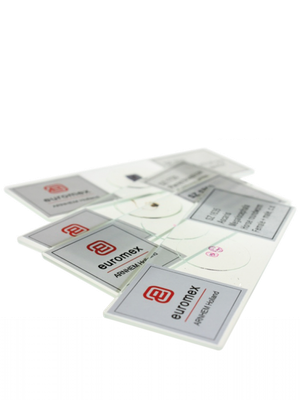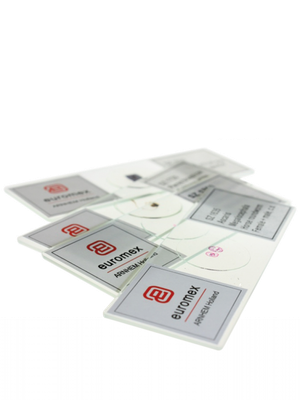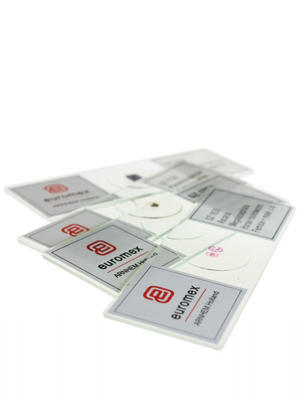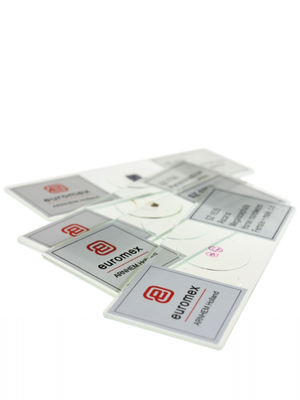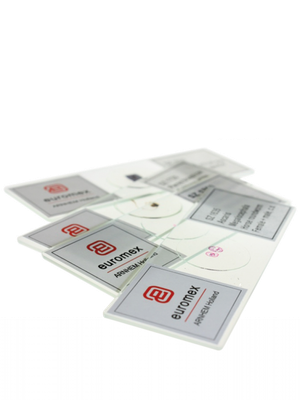Verzending 24–48 u • Levering in de hele EU • Veilige chemieverpakking
Micropreparations set 3 (25 pieces)
SKU PB.5213
€ 79,65
In stock
1
Save this product for later
Micropreparations set 3 (25 pieces)
Product Details
EAN: 8,95E+12
Brand: Euromex
Type Preparation: set
[tab name='Description']
Euromex offers both teachers and microscopy amateurs a wide range of quality preparation sets. These sets can be used directly in biology lessons or as an introduction to zoology and botany.
Series with 25 micropreparations for human & mammalian histology, zoology and botany. Each set contains a variety of micro preparations (see details in next tab) All micro preparations are supplied in a plastic preparation box for 25 preparations
This set contains:
Histology
SH.1006 Elastic cartilage tissue, rabbit
SH.1040 Smooth muscle tissue rabbit, cs and ls
SH.1110 Lung with injected blood vessels, rabbit, cs
SH.1130 Artery and vein rabbit, cs
SH.1410 Rabbit nerve, cs and ls
Zoology
SZ.1535 Eye animal, Euglena viridis, wm
SZ.1586 Freshwater polyp, Hydra, complete tentacles, wm
SZ.1620 Schistosoma Japonicum, female, wm
SZ.1705 Honeybee, Apis mellifica, hind leg, wm
SZ.1733 Cabbage White, Pieres brassicae, part of wing
SZ.1738 Grasshopper, Locusta, mouthparts, wm
SZ.1780 Insect legs, 4 types, honey bee, housefly, mosquito and spider
SZ.1877 Frog, Rana spec., blood smear
Pantkunde
SB.2011 Maize , Zea mays, root tip with hairs, ls
SB.2020 Sunflower, Helianthus, old root, cs
SB.2025 Monocot/dicot roots of maize and sunflower, cs
SB.2040 Potato, Solanum tuberosus, starch cells
SB.2075 Monocot/dicot stem, corn and pumpkin, cs
SB.2091 Hydrilla stem, cs
SB.2100 Geranium, Pelargonium hortorum, stem, cs
SB. 2337 Star moss, Mnium, antheridia, ls
SB.2339 Star moss, Mnium, archegonia, ls
SB.2373 Ink fungus, Coprinus, fruiting body, cs
SB.2380 Spiral seaweed, Spirogyra sp., conjugating
SB.2420 3 Types of bacteria, cocci, bacilli and spirals, smear
––––––– ––––––––––––––––––––– ––––––––––––––––––––––––––––
Abbreviations
cs = cross section
ls = longitudinal section
wm = whole preparation
––––––– –––––––––––––––––––––––––––––––– –––––––––––––––––––
[tab name='Technical Specifications']
How are cells stained and samples prepared?
Cell staining techniques and preparation depend on the type of staining agent and analysis method. One or more of the following procedures may be necessary to prepare a sample:
• Permeabilization - treatment of cells, usually with a mild surfactant that dissolves cell membranes to allow larger dye molecules to enter the cell
• Fixation - serves to "fix" or maintain cell or tissue morphology through the perparation process. This process can include several steps, but most fixation procedures involve adding a chemical fixative that creates chemical bonds between proteins to increase their strength. Common fixatives include formaldehyde, ethanol, methanol, and/or picric acid
• Mounting - involves attaching samples to a slide for observation and analysis. Cells can be grown directly on the slide or single cells can be applied to a slide using sterile techniques. Thin sections (slices) of material - such as tissue - can also be placed on a microscope slide for observation
• Staining - the application of staining agent to cells, tissues, components, or metabolic processes of cells to color. This method may include immersing the sample (before or after fixing or mounting) in a dye solution and then rinsing and observing the sample under a microscope. Some dyes require the use of an etchant, which chemically reacts with the colorant to produce an insoluble colored result. The etched dye will remain on/in the sample when the excess dye solution is rinsed away
You May Also Like
Display prices in:EUR
